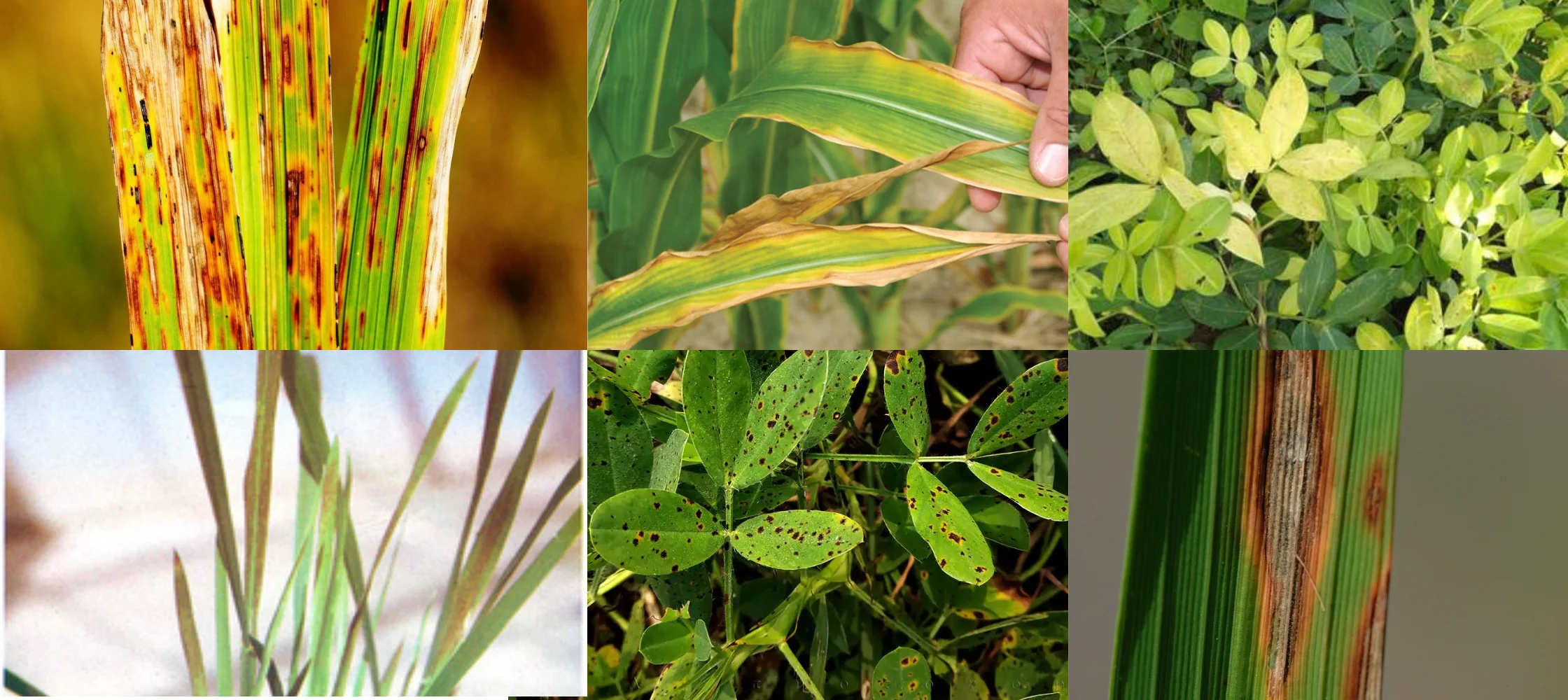
By:- O S Sandhu and S K Kataria
Each plant nutrient performs a crucial role in plant growth and development. A deficiency of an essential nutrient makes it impossible for the plant to complete the vegetative or reproductive stage of its life cycle. Such deficiency is specific to the element in question and can be prevented or corrected only by supplying that particular nutrient element. Similarly, micronutrients are needed in much smaller quantities but are necessary for the growth and development of plants. Among the different micronutrients, the deficiency of zinc (Zn) and iron (Fe)most commonly seen in kharifcrops in Punjab.
Zinc deficiency in rice is characterized by multiple symptoms that usually appear 4-6 weeks after sowing in direct seeded rice (DSR) and 2-3 weeks after transplanting in transplanted rice. The leaves develop brown blotches and streaks that may fuse to cover older leaves entirely, plants remain stunted and in severe cases may die, while those that recover will show substantial delay in maturity and reduction in yield. The application of Zinc Sulphate to the soil is the most common way of ameliorating zinc deficiency. If the previous crop in the same field had shown the symptoms of zinc deficiency, the apply the 25 kg per acre of zinc sulphate heptahydrate (ZnSO4.7H2O) or 16 kg per acre of zinc sulphate monohydrate (ZnSO4.H2O) at the time of puddling. However, if the deficiency is noticed in the growing rice crop, then apply this quantity of zinc sulphate as soon as possible. In highly deteriorated soils, the symptoms of zinc deficiency sometimes appear in patches even after the application of the recommended dose of zinc sulphate. In that event, broadcast 10 kg of zinc sulphateheptahydrate or 6.5 kg zinc sulphate monohydrate per acre mixed with an equal quantity of dry soil on the affected patches
In maize, the zinc deficiency symptoms appear within 2 weeks of seedling emergence. A reddish to necrotic brown discolouration at the leaf margins and the stems may develop on basal plant parts i.esecond or third leaf from the top of the plant. In severe the internode growth is reduced and leads to a stunted appearance. In the case of mild deficiency, there is a white stripe in the upper leaves. The mild deficiency disappears by the mid-season, but the silking and tasseling are delayed. Where zinc deficiency had been noticed in the preceding crop, broadcast 10 kg of zinc sulphateheptahydrate (21%) or 6.5 kg zinc sulphate monohydrate (33%) per acre at sowing mixed with an equal quantity of dry soil, along rows, hoe it into the soil and then irrigate the field. In standing crop, apply 10 kg of zinc sulphateheptahydrate (21%) or 6.5 kg zinc sulphate monohydrate (33%) mixed with an equal quantity of dry soil along rows, hoe it into the soil and then irrigate the field. When the symptoms are observed late in the season and intercultural is not possible, spray zinc sulphate-lime mixture prepared by mixing 1.2 kg of zinc sulphateheptahydrate (21%) and 0.6 kg of unslaked lime or 0.75 kg zinc sulphate monohydrate (33%) and 0.38 kg of unslaked lime with 200 litres of water to cover one acre.
Zinc deficiency in groundnut causes irregular mottling and yellow-ivory interveinal chlorosis in the upper leaves. Severe deficiency leads to chlorotic conditions of entire leaflets. To ameliorate zinc deficiency, apply 25 kg zinc sulphateheptahydrate (21% zinc) or 16 kg zinc sulphate monohydrate (33% zinc) per acre. This dose will be sufficient for 2 to 3 years.
Iron deficiency is most commonly seen in DSR due to the absence of reduced conditions in the soil. Symptoms of Fe deficiency include interveinal yellowing spreads to older leaves, in severe Fe deficiency top leaves become completely bleached and show a pale yellow to whitish discolouration. In most severe conditions plants die and often the crop fails completely. Start giving copious irrigations as soon as chlorosis appears and give 2 or 3 sprays of one per cent ferrous sulphate solution at weekly intervals (1 kg of ferrous sulphate in 100 litres of water per acre). Iron fertilizers applied to the soil are often not effective, because they are rapidly converted to insoluble forms.
In Sugarcane iron deficiency is observed both in the ratoon and plant crops on light-textured and calcareous soils. The deficiency symptoms are characterized by the paling of leaves, followed by the formation of alternating green and chlorotic stripes extending to the full length of the leaf blade. In the later stages, the leaf becomes yellow. In severe cases, leaves become white and the plants remain stunted. Spray the crop 2 or 3 times with a 1% solution of ferrous sulphate (1 kg ferrous sulphate in 100 litres of water) at weekly intervals soon after the symptoms appear.
The writers are from the KrishiVigyan Kendra, Jalandhar (Nurmahal)
Your email address will not be published. Required fields are marked *
29 Jan, 2024
29 Jan, 2024
29 Jan, 2024
25 Jan, 2024